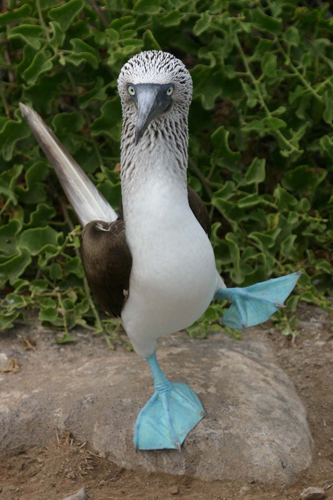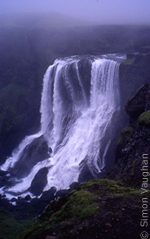
“You’d be dancing too if your feet were this cold!” (Blue footed booby)
The Galapagos Islands were untouched by human civilisation until the early 19th century, but have more than made up for that since as a haven for those drawn by its wildlife, scenery, science and snorkelling.
Located in the Pacific Ocean 972 kilometres west of Ecuador, the world famous archipelago is comprised of 19 islands and more than a hundred islets and outcrops, although most visitors tend not to explore more than eight of them. The islands are of course legendary because of their role in Charles Darwin’s formulation of the Theory of Evolution and they remain a natural paradise to this day. The Ecuadorian government, while keen to allow travellers from all over the world to see this natural wonder, are also committed to ensuring that their trespass doesn’t adversely affect the very thing that people travel from all over the world to see – their unspoiled beauty. As a result, the numbers of visitors to the islands are limited and their movements and activities restricted. However, these constraints do not in any way detract from an incredible experience.
The vast majority of people who visit the Galapagos take a cruise around the islands. After a flight from the mainland, visitors are transferred to the harbour to board their vessel. Galapagos operators cater for all tastes and budgets from those seeking seaborne luxury and sparing no expense, to others with more modest tastes and more limited funds. Regardless of the price tag however, almost all boats have their own onboard naturalists who assist with the daily shore excursions and with general lessons in zoology, biology and oceanography to maximise visitors’ experiences and to provide them with the best appreciation of their trip.
Different islands in the chain offer different sights and experiences. Santa Fe is particularly renowned for its colony of sea lions with which it is often possible to swim. Espanola is home to red-billed tropicbords, blue-footed boobies, marine iguanas and is a nesting site to what is virtually the entire world’s population of waved albatrosses. Santa Cruz is home to the Charles Darwin Research Station and a nursery that caters for young tortoises. Bartolome boasts the rare Galapagos penguins while Floreana Island has a wooden barrel planted in the 18th century to be used as a post office for passing ships…and is still used by some visitors today!
Trips to the Galapagos vary from a few days to several weeks depending on how many islands the visitor wants to see. While almost all boats boast snorkelling facilities and many also offer scuba, there are also specialist operators catering for more experienced certified divers. But if you’re a bit of a landlubber and your sea-legs are as wobbly as a plate of Jell-O in a hurricane, there are also land-based trips that still explore the islands by boat but remain in hotels at night.
Although now connected to the outside world by direct flights from the mainland, the Galapagos remains as exotic and mystifying as the day that Darwin’s Beagle first explored the beaches, channels and volcanoes.
Photo by: Mariko Yuki Post by: Simon Vaughan













